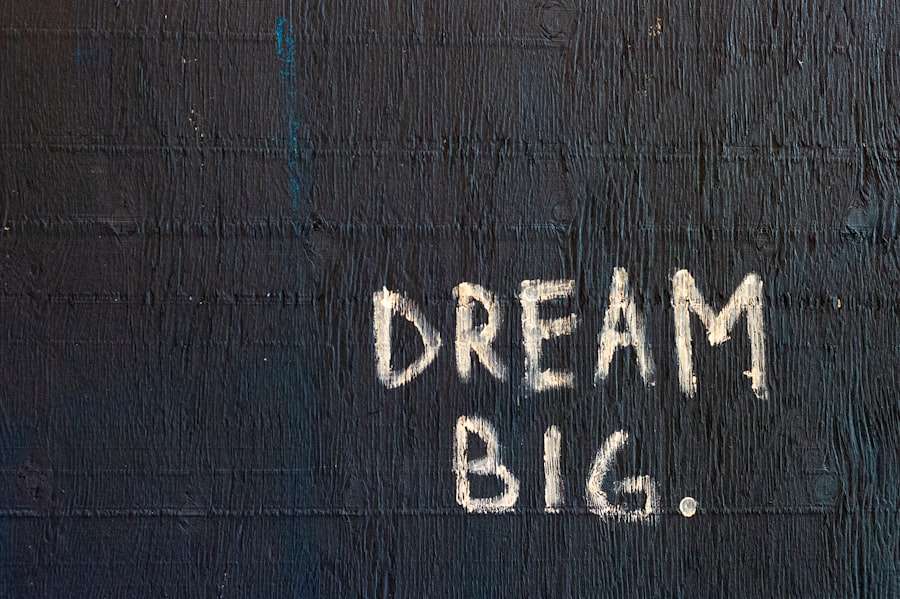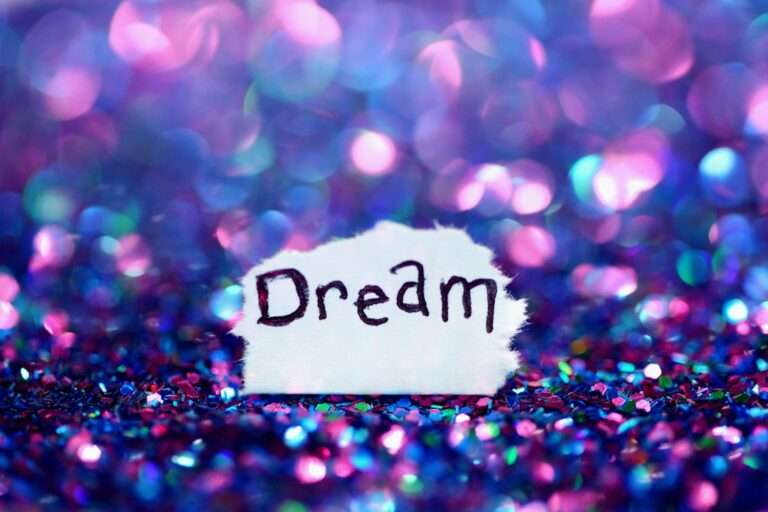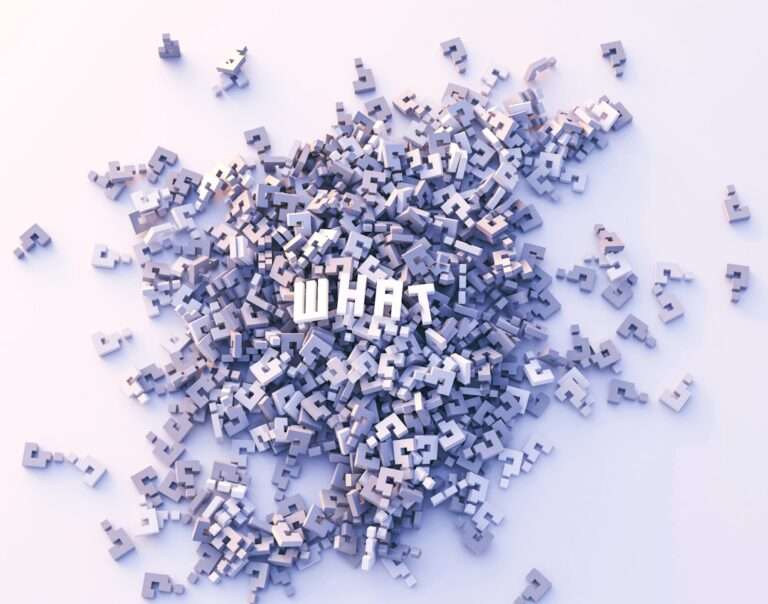Unlocking the Hidden Meanings of Dream Symbolism: A Journey into the Subconscious Mind
Dream symbolism refers to the use of symbols in dreams to convey deeper meanings and messages. Dreams are a mysterious and fascinating aspect of human experience, and understanding their symbolism can provide valuable insights into our subconscious mind and inner world. Dream symbolism has been studied and interpreted for centuries, with various cultures and traditions offering their own unique perspectives on the subject.
Understanding dream symbolism is important because it allows us to tap into the rich tapestry of our subconscious mind. Dreams often contain hidden messages, desires, fears, and unresolved emotions that can provide valuable information about ourselves and our lives. By deciphering the symbols in our dreams, we can gain a deeper understanding of our thoughts, feelings, and experiences.
The history of dream interpretation dates back to ancient civilizations such as the Egyptians and Greeks, who believed that dreams were messages from the gods or divine entities. In more recent times, Sigmund Freud and Carl Jung made significant contributions to the field of dream interpretation. Freud believed that dreams were a manifestation of repressed desires and unconscious thoughts, while Jung emphasized the importance of archetypes and collective symbols in dreams.
The Science of Dream Interpretation: How It Works
Dreams occur during the rapid eye movement (REM) stage of sleep, which is characterized by increased brain activity and vivid dreaming. During REM sleep, the brain processes emotions, memories, and experiences from the day. This processing often takes the form of symbolic imagery and narratives in dreams.
The process of dream interpretation involves analyzing the symbols and themes present in a dream to uncover their underlying meanings. This can be done through various techniques such as free association, where the dreamer explores their thoughts and feelings associated with each symbol or image in the dream. It is important to approach dream interpretation with an open mind and a willingness to explore different possibilities.
The Role of the Subconscious Mind in Dream Symbolism
The subconscious mind is the part of our mind that operates below the level of conscious awareness. It stores memories, emotions, and beliefs that may not be readily accessible to our conscious mind. The subconscious mind plays a significant role in dream symbolism, as it often uses symbols and imagery to communicate its messages.
Dreams can provide a window into the subconscious mind, allowing us to access and explore aspects of ourselves that may be hidden or repressed. The symbols and themes that appear in our dreams are often influenced by our subconscious thoughts, desires, fears, and unresolved emotions. By paying attention to these symbols and exploring their meanings, we can gain valuable insights into our inner world.
Recurring dreams are particularly significant in dream symbolism, as they often indicate unresolved issues or recurring patterns in our lives. These dreams can serve as a wake-up call, urging us to pay attention to certain aspects of ourselves or our lives that need healing or resolution.
Common Dream Symbols and Their Meanings
| Dream Symbol | Meaning |
|---|---|
| Water | Represents emotions, the unconscious mind, and purification |
| Teeth | Symbolize power, confidence, and self-image |
| Flying | Represents freedom, ambition, and the ability to rise above challenges |
| Death | Symbolizes change, transformation, and the end of a cycle |
| Snakes | Represent fear, danger, and transformation |
| Money | Symbolizes power, success, and self-worth |
| Fire | Represents passion, creativity, and transformation |
| Animals | Symbolize instincts, primal desires, and the unconscious mind |
Dreams are filled with a wide range of symbols and imagery, each with its own unique meaning. While the interpretation of dream symbols can vary depending on the individual and their personal experiences, there are some common symbols that tend to have universal meanings.
For example, water often symbolizes emotions and the unconscious mind. Dreams featuring water can indicate the presence of strong emotions or the need to dive deeper into our subconscious. Another common symbol is flying, which often represents freedom, liberation, or a desire for escape.
Interpreting dream symbols requires paying attention to the context and personal associations of each symbol. For example, while snakes are often associated with fear or danger in Western culture, they may hold different meanings in other cultures or for individuals who have positive associations with snakes.
To identify personal meanings of symbols, it can be helpful to keep a dream journal and record your dreams regularly. By reflecting on your dreams over time, you may start to notice patterns and recurring symbols that hold personal significance for you.
The Power of Archetypes in Dream Symbolism
Archetypes are universal symbols or patterns that are present in the collective unconscious, a concept developed by Carl Jung. These archetypes represent fundamental human experiences and emotions, and they often appear in dreams as symbolic figures or motifs.
Examples of archetypes in dreams include the wise old man or woman, the hero or heroine, the trickster, and the shadow. These archetypal figures can provide valuable insights into our own psyche and the challenges and opportunities we may be facing.
The significance of archetypes in dream symbolism lies in their ability to tap into deep-seated emotions and experiences that are shared by all humans. By recognizing and exploring these archetypal symbols in our dreams, we can gain a deeper understanding of ourselves and our place in the world.
The Influence of Culture and Personal Experience on Dream Symbolism

Dream symbolism is not only influenced by universal archetypes but also by cultural beliefs, values, and experiences. Different cultures may have different interpretations of certain symbols or themes in dreams.
For example, while dreaming of a white horse may be seen as a positive symbol of purity and strength in Western cultures, it may hold different meanings in other cultures. Similarly, personal experiences and beliefs can shape the interpretation of dream symbols. For instance, someone who has had a traumatic experience with dogs may interpret a dream featuring a dog as a symbol of fear or danger.
Context is also important in dream interpretation. The same symbol can have different meanings depending on the overall narrative or emotions present in the dream. It is essential to consider the specific details and circumstances surrounding each dream to gain a more accurate understanding of its symbolism.
The Importance of Emotions in Dream Symbolism
Emotions play a crucial role in dream symbolism, as they often serve as a guide to understanding the underlying messages and meanings of our dreams. Dreams can evoke a wide range of emotions, from fear and anxiety to joy and excitement.
By paying attention to the emotions experienced in a dream, we can gain insights into our subconscious thoughts and feelings. For example, a dream filled with fear and anxiety may indicate unresolved fears or anxieties in our waking life that need to be addressed.
Identifying emotions in dreams can be done by reflecting on how the dream made you feel upon waking up. It can also be helpful to explore the emotions associated with specific symbols or images in the dream. By understanding and processing these emotions, we can gain a deeper understanding of ourselves and our emotional landscape.
Techniques for Analyzing and Decoding Dream Symbolism
There are several techniques that can be used to analyze and decode dream symbolism. One effective technique is keeping a dream journal, where you record your dreams as soon as you wake up. This allows you to capture the details and emotions of the dream while they are still fresh in your mind.
By reviewing your dream journal over time, you may start to notice patterns, recurring symbols, or themes that hold personal significance for you. This can provide valuable insights into your subconscious mind and help you uncover hidden desires, fears, or unresolved issues.
Another technique is to identify patterns and themes in your dreams. Pay attention to recurring symbols or motifs that appear in multiple dreams, as they may hold deeper meanings or messages from your subconscious.
Symbolism dictionaries and resources can also be helpful in interpreting dream symbols. These resources provide general interpretations of common symbols and can serve as a starting point for exploring the meanings of symbols in your dreams. However, it is important to remember that personal associations and context play a significant role in dream interpretation, so it is essential to consider these factors alongside any general interpretations.
Using Dream Symbolism for Personal Growth and Healing
Dream symbolism can be a powerful tool for personal growth and healing. By exploring the symbols and messages in our dreams, we can gain a deeper understanding of ourselves and our experiences. This self-awareness can lead to personal growth, as we become more conscious of our thoughts, feelings, and behaviors.
Dream symbolism can also be used in therapy as a way to uncover and process unconscious thoughts and emotions. Therapists often use dream analysis as a tool to help clients explore their inner world and gain insights into their struggles and challenges.
Techniques for using dream symbolism for healing include engaging in active imagination, where you visualize and interact with dream symbols or figures to gain deeper insights. Journaling about your dreams and reflecting on their meanings can also be a powerful tool for self-reflection and healing.
Exploring the Spiritual and Transcendent Dimensions of Dream Symbolism
Dreams have long been associated with spirituality and the transcendent dimensions of human experience. Many spiritual traditions believe that dreams provide a connection to higher realms of consciousness or serve as a means of communication with divine entities.
Exploring the spiritual dimensions of dream symbolism involves paying attention to symbols or experiences that evoke a sense of awe, wonder, or transcendence. These may include encounters with spiritual figures, mystical landscapes, or profound insights into the nature of reality.
Techniques for exploring the spiritual dimensions of dream symbolism include meditation, prayer, or engaging in rituals before sleep to invite spiritual guidance or insights into your dreams. It is important to approach these experiences with an open mind and a willingness to explore the mysteries of the universe.
Understanding dream symbolism is an important tool for personal growth, self-awareness, and healing. Dreams provide a window into our subconscious mind and inner world, allowing us to access hidden thoughts, emotions, desires, and fears. By deciphering the symbols and messages in our dreams, we can gain valuable insights into ourselves and our lives.
Dream interpretation is a fascinating field that combines science, psychology, and spirituality. It involves analyzing the symbols, themes, and emotions present in our dreams to uncover their underlying meanings. Techniques such as keeping a dream journal, identifying patterns and themes, and using symbolism dictionaries can be helpful in decoding dream symbolism.
By exploring and interpreting our dreams, we can embark on a journey of self-discovery and personal growth. Dreams have the power to guide us, heal us, and provide us with profound insights into our lives. So, let us embrace the mystery of our dreams and embark on this transformative journey of self-exploration.
If you’re interested in exploring the fascinating world of dream symbolism, you may also find the article on the symbolism of a snake intriguing. Snakes have long been associated with various meanings and interpretations in dreams, representing transformation, healing, and even hidden fears. To delve deeper into this topic, check out the article on symbolismhub.com. It’s a captivating read that will shed light on the symbolic significance of encountering a snake in your dreams.
FAQs
What is dream symbolism?
Dream symbolism is the interpretation of the images, objects, and events that occur in a dream as representing deeper meanings or insights into the dreamer’s subconscious thoughts and emotions.
What are some common dream symbols?
Common dream symbols include animals, water, flying, falling, death, and teeth. However, the interpretation of these symbols can vary depending on the individual dreamer’s personal experiences and cultural background.
How can dream symbolism be interpreted?
Dream symbolism can be interpreted through various methods, including analyzing the context of the dream, identifying recurring symbols, and exploring the dreamer’s personal associations with the symbols. Dream dictionaries and online resources can also provide guidance in interpreting dream symbols.
What is the significance of dream symbolism?
Dream symbolism can provide insight into the dreamer’s subconscious thoughts and emotions, helping them to better understand themselves and their experiences. It can also offer guidance and direction in making important life decisions or resolving personal issues.
Can dream symbolism be scientifically proven?
Dream symbolism is not a scientifically proven concept, as it is based on subjective interpretations of dream imagery. However, many people find value in exploring dream symbolism as a tool for self-reflection and personal growth.





